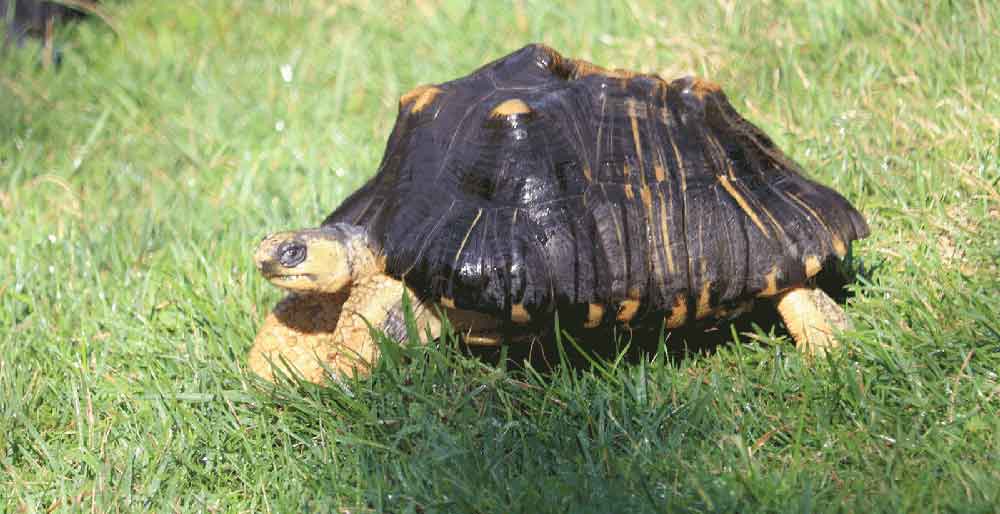Meet Our Animals
The Brandywine Zoo proves that great things do come in small packages. The Zoo features animals from the tropical and temperate areas of North and South America, Asia and Africa. Our animals range from more common species to the highly endangered. All enjoy natural settings and welcome your visit to the zoo. Some animals may be off exhibit during cold weather.
Astrochelys radiata
Radiated Tortoise

Habitat
Geographic Region & Range
Diet
Physical Description
The head, legs, and tail are yellow, with a black patch on top of the head and around the eyes. Juveniles are lighter in color. The shell is highly domed and is marked with yellow lines from the center of each dark plate.
Lifespan
Usually up to 60 years. Rarely, they can live much longer. The oldest known was thought to have lived to be 188.
Threats
Status
What are AZA Zoos doing for
Radiated Tortoise
Their zoo population is managed through conservation breeding programs called Species Survival Plan programs, which ensures genetic diversity and species health. As of 2018, there were over 330 individuals at 60+ AZA-accredited facilities.
AZA zoos fund and participate in field research focusing on the ecology of radiated tortoises in Madagascar, and outreach efforts focusing on raising awareness, anti-poaching measures, and the reintroduction of tortoises raised in human care.
Fun Facts
Like many turtles, the sex of their young is determined by the temperature of the eggs during incubation. Cool temperatures produce males, while warmer temperatures (around 87 degrees F) produce females.
Tortoises can feel when you touch their shell, as the shell contains nerves and blood vessels.
The oldest radiated tortoise, Tu’i Malila, was said to be 188 when she died.
Young radiated tortoises are lighter in color than the bright yellow adults.
The word for radiated tortoise in Malagasy, a language spoken in Madagascar, is sokatra.




